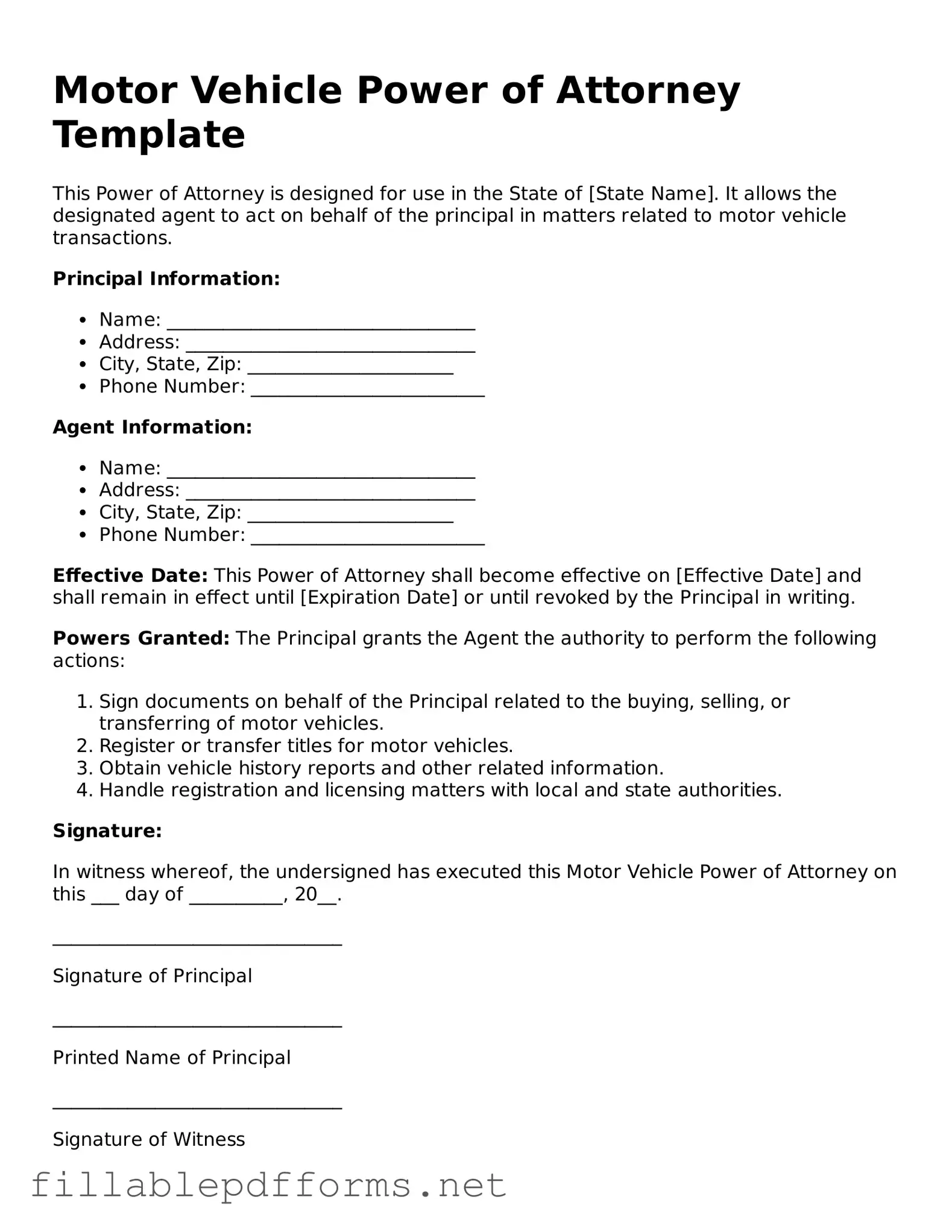Blank Motor Vehicle Power of Attorney Template
The Motor Vehicle Power of Attorney form is a legal document that allows an individual to designate another person to act on their behalf regarding vehicle-related matters. This can include tasks such as transferring ownership, registering a vehicle, or handling other transactions with the Department of Motor Vehicles. Understanding how this form works can simplify the process of managing vehicle affairs, especially when the vehicle owner is unable to do so themselves.
Launch Editor Here
